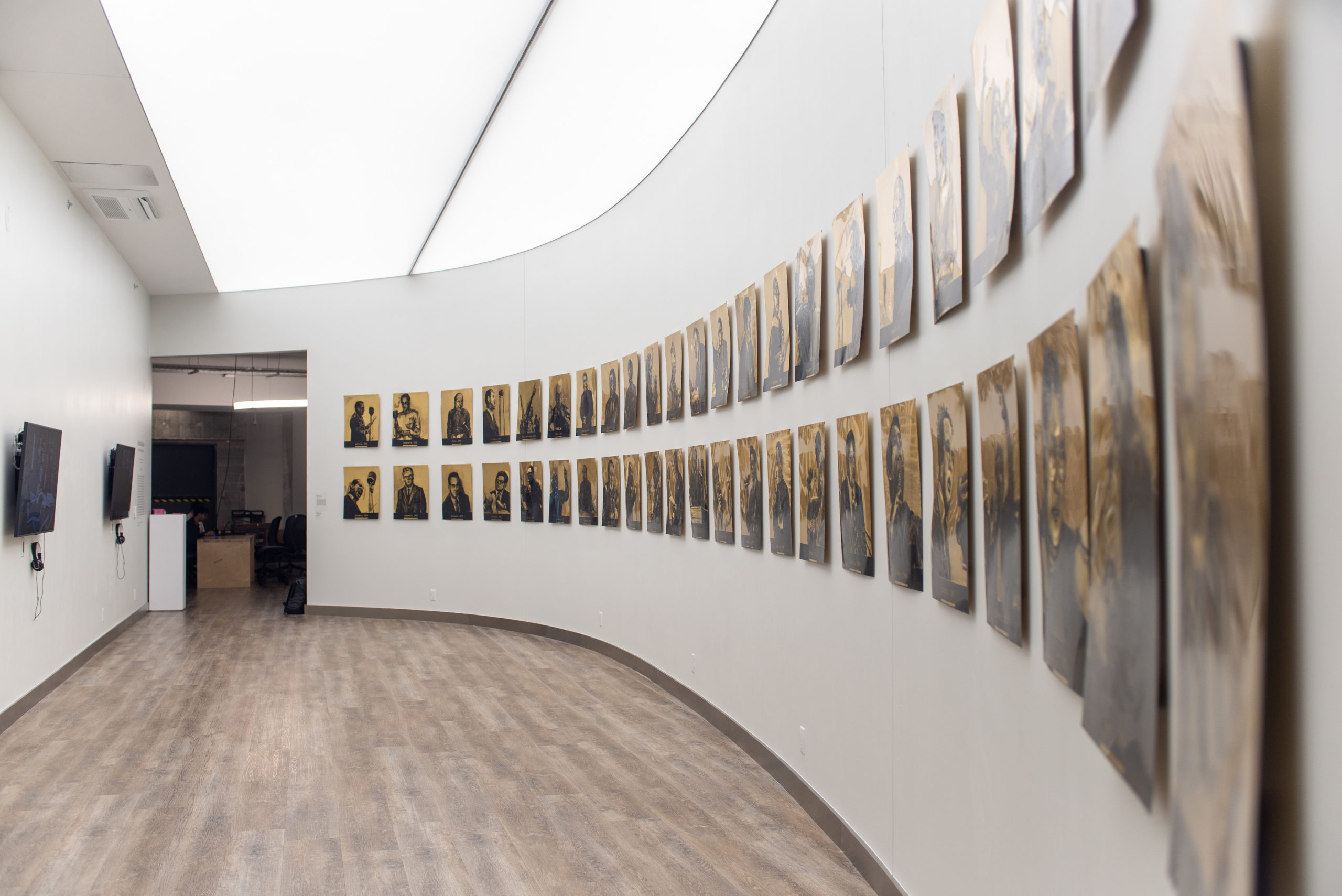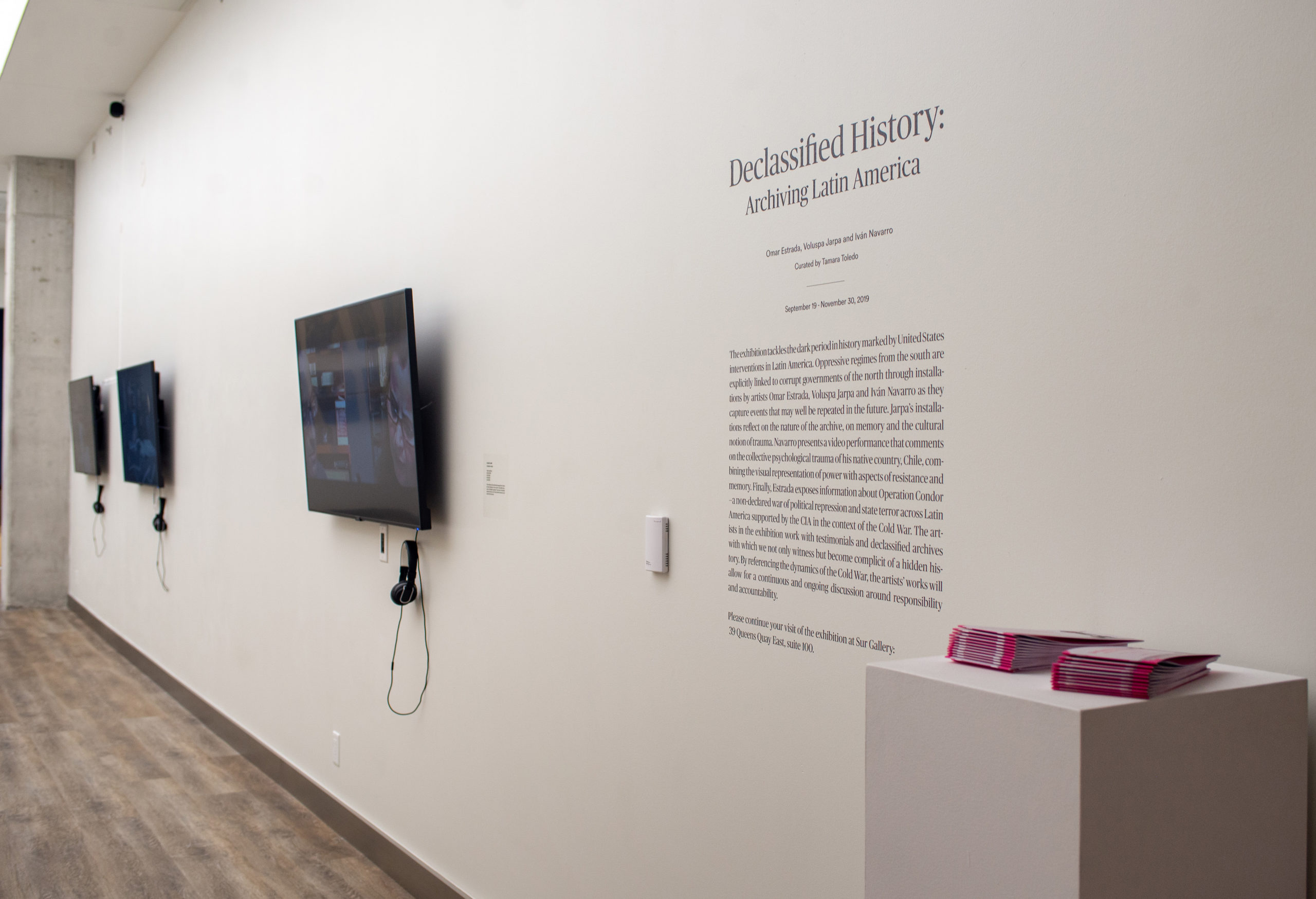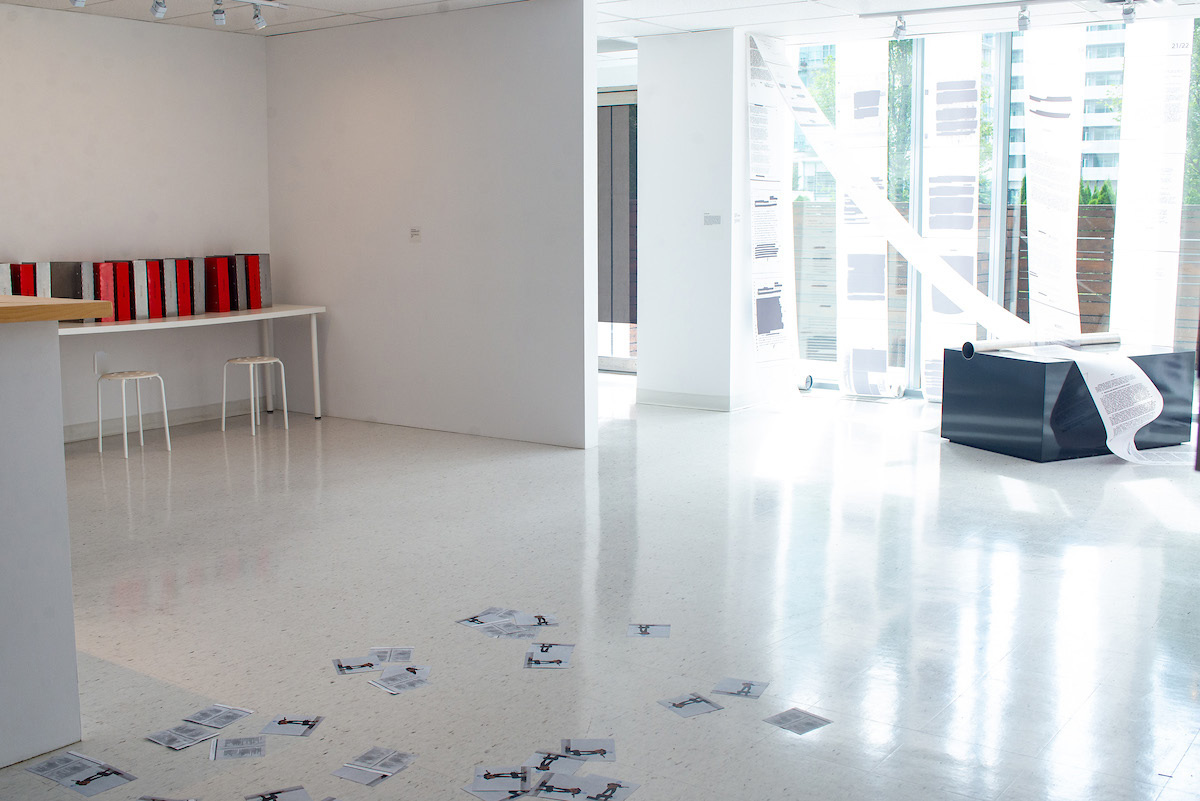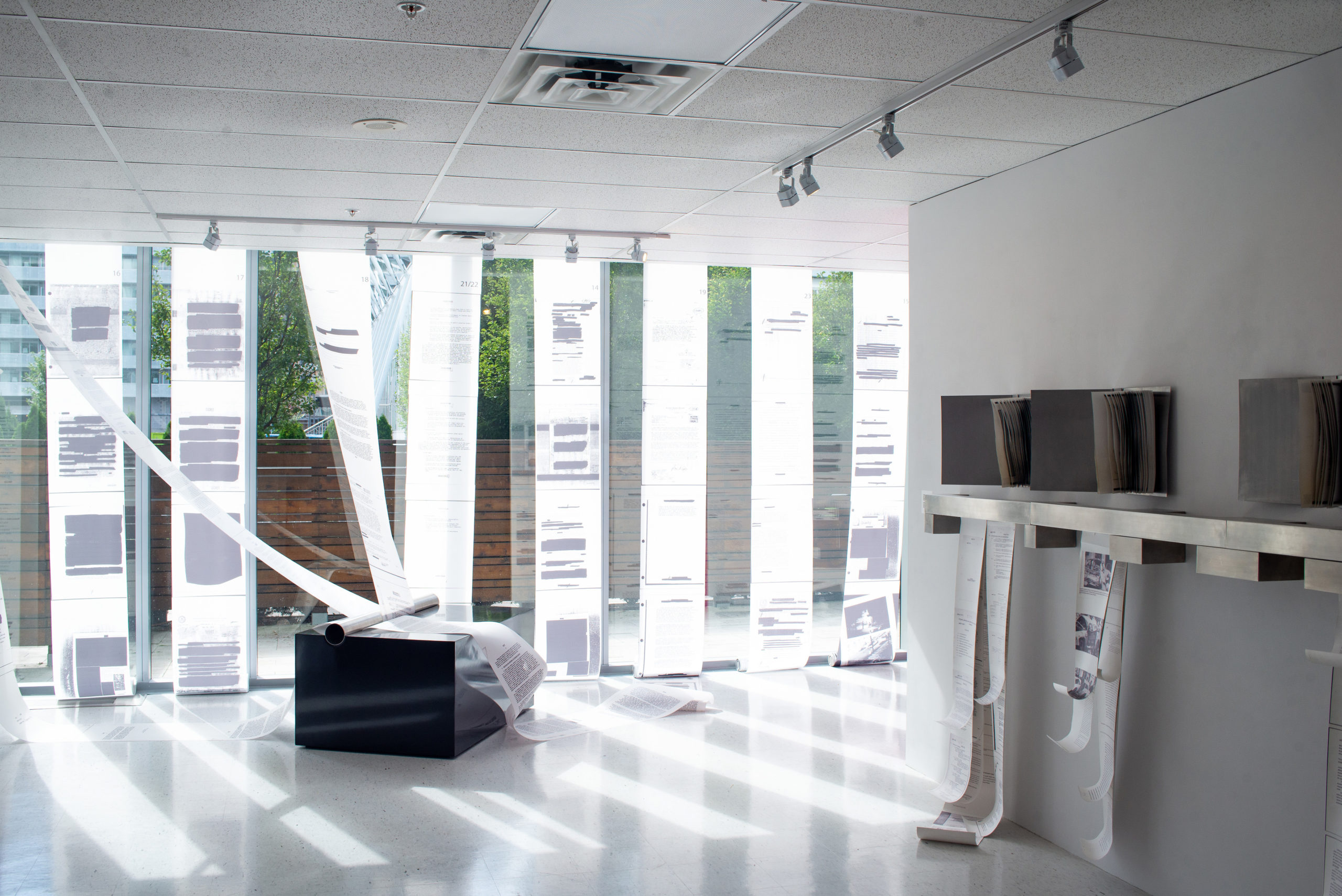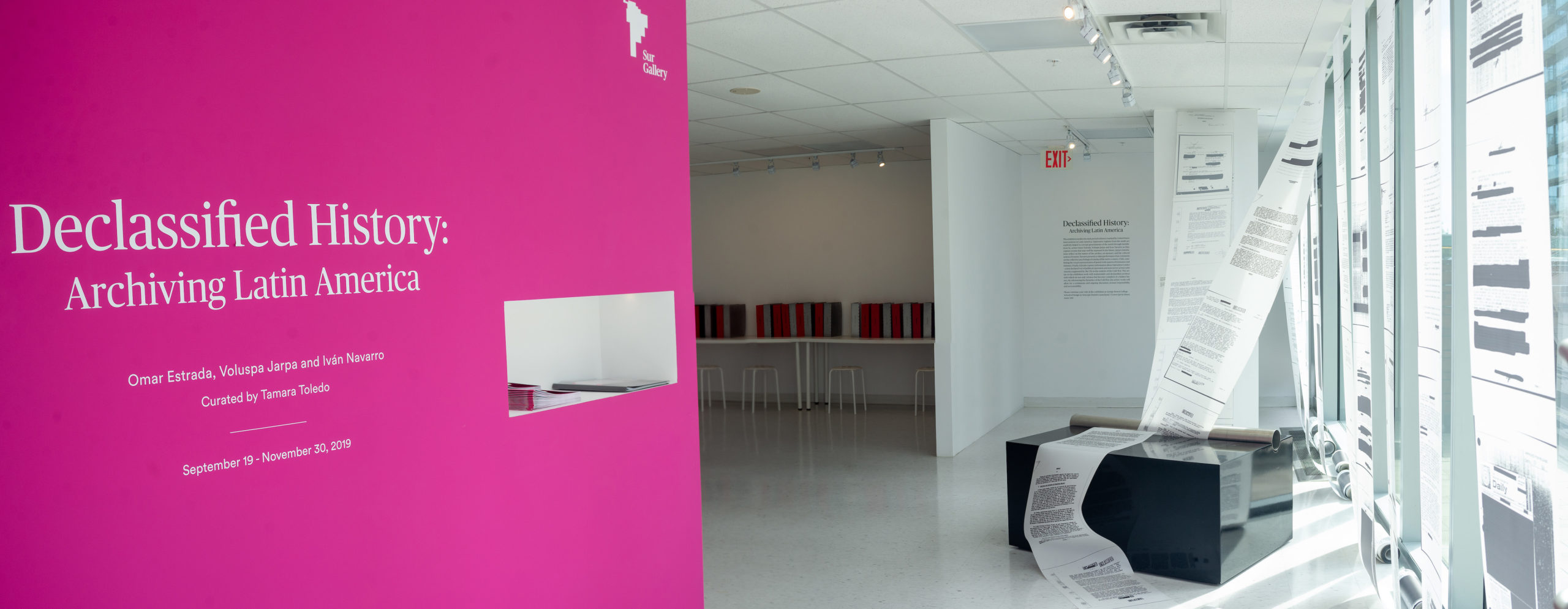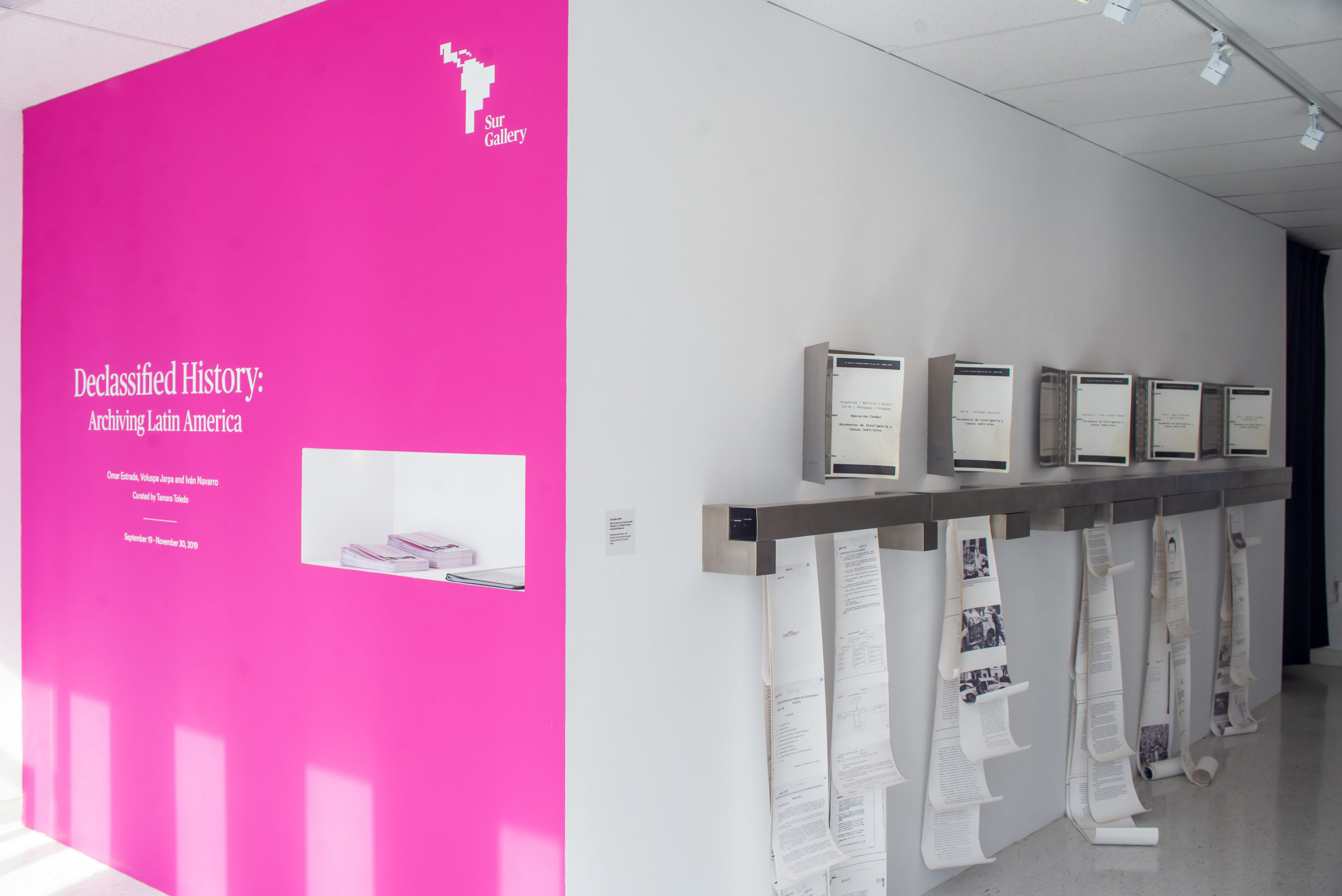
En Nuestra Pequeña Región de por Acá
Serie lo que ves es lo que es correspond to the study of declassified archives from the US intelligence services during the period 1948-1994 and propose a revision of the fourteen Latin American countries’ history. In relation to these files, this group of works also problematizes the role of Minimalism, opposing its austerity to the Latin American political violence, and juxtaposing the appropriation of Donald Judd’s works that are shown structurally transformed by inserting files or printed strips, which modify its contents. In fact, while occurring major political operations in Latin American territory, artistic and American academic institutions promote and disseminate minimalist abstraction as its artistic vanguard. Thus, the exhibition includes a couple of references to works by Donald Judd, which are materially intervened by reproductions of intelligence documents.
Todo se desvanece en la niebla is a compilation of CIA declassified documents and court records provided by family members or plaintiffs of the assassinated Latin American leadres, as well as scientific experts reports on the deaths of each of these characters. It is the culmination of a research process that lasted several years and the information is classified by country and dates.
Translation Lessons reflects about English as an hegemonic language. In it, an English teacher teaches English to the artist by reading CIA declassified files. The film highlights a powerful paradox: to understand a large part of the recent political history of Latin American countries, it is necessary to know a foreign language. Different video editions have been produced between 2014 and 2017.
Mi carne es bronce para la historia is composed by the portraits of 47 Latin American leaders. These are the images of public speakers whose deaths have not been solved or are currently under review. These leaders occupied different public positions in their respective states: presidents, ministers, judges, military officers, archbishops, deputies, and senators. Some questions surrounding this group of works are: When and how you can change the course of a collective history? How do you perform these operations? What happens when a leader leaves his place of social representation and there is another who takes
his place? In what directions the collective history of our societies has been manipulated?
exhibición:
COLLECTIVE EXHIBITION
“DECLASSIFIED HISTORY: ARCHIVING LATIN AMERICA”
CURATED BY: TAMARA TOLEDO
ciudad:
país:
Especificación:
- 2016
Serie lo que ves es lo que es / Judd Tubo
(What you see is what it is Series / Judd Tube)
Black lacquered wood volume with tubular stainless steel profile and strips printed on backlight film with metal plates - 2016
Serie lo que ves es lo que es / Judd Fibonacci
(What you see is what it is Series / Judd Fibonacci)
Stainless steel rectangular profile, 7 stainless steel pieces, 5 stainless steel folders with printed documents and printed paper strips - 2016
Todo se desvanece en la niebla
(Everything fades into the fog)
29 stainless steel folders with documents printed on paper - 2014-2017
Translation Lessons
Video installation with four different edit versions - 2016
Mi carne es bronce para la historia
(Mi flesh is bronze for history)
46 ink on bronze sheet portraits
